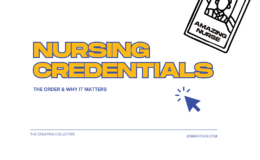The Article: Davidson, J., Buenavista, R., Hobbs, K., & Kracht, K. (2011). Factors inhibiting or enhancing family presence during resuscitation in the emergency department. Advanced Emergency Nursing Journal, 33(4): 336-343.
Big Idea: This grounded theory qualitative study was conducted in a Level I trauma center to identify themes or “drivers” of family presence during ER resuscitation. The results of the study helped with the revision of an organizational policy surrounding family presence during resuscitation.
Survey Says!: Twelve healthcare professionals participated in this study. Professionals with both positive and negative views of family presence during resuscitation in the ER were purposely included in the interviews. The authors identified enhancing and deterring drivers, with some drivers simultaneously in both categories. For example, authors categorized “personalizing the patient” as both an enhancer and a deterrent to family presence during resuscitation.
Quotable: “Furthermore, Roberts, de Wit, Epstein, Didomenico, and Devlin (2010) have reported that nurses will block translation into practice by willful nonadherence to protocols when they do not agree with the protocol” (p. 337).
“The central phenomena of allowing family presence at the bedside during resuscitation is affected by staff knowledge, ability to cope with raw family emotion, personal values regarding family presence, the environment, and resources available within the code response” (p. 342).
So What?: I intentionally diverged from my typical articles this week. I may not necessarily use this article in my every day nursing practice, but I do find it valuable. Family presence during resuscitation has always intrigued me as I have been involved in both kinds of codes – those with and without the family present. This article gives a thorough overview of the grounded theory approach in addition to the study concept, and the authors explain grounded theory is an excellent way to drill down to root causes of professionals who choose not to implement practice changes.






Article Comments